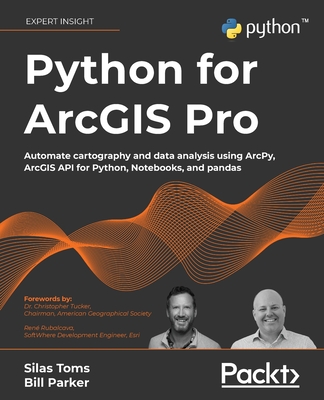Learning R for Geospatial Analysis
暫譯: 學習 R 進行地理空間分析
Michael Dorman
- 出版商: Packt Publishing
- 出版日期: 2014-12-28
- 售價: $2,200
- 貴賓價: 9.5 折 $2,090
- 語言: 英文
- 頁數: 330
- 裝訂: Paperback
- ISBN: 1783984368
- ISBN-13: 9781783984367
-
相關分類:
R 語言
海外代購書籍(需單獨結帳)
相關主題
商品描述
About This Book
- Write powerful R scripts to manipulate your spatial data
- Gain insight from spatial patterns utilizing R's advanced computation and visualization capabilities
- Work within a single spatial analysis environment from start to finish
Who This Book Is For
This book is intended for anyone who wants to learn how to efficiently analyze geospatial data with R, including GIS analysts, researchers, educators, and students who work with spatial data and who are interested in expanding their capabilities through programming. The book assumes familiarity with the basic geographic information concepts (such as spatial coordinates), but no prior experience with R and/or programming is required. By focusing on R exclusively, you will not need to depend on any external software—a working installation of R is all that is necessary to begin.
What You Will Learn
- Make inferences from tables by joining, reshaping, and aggregating
- Familiarize yourself with the R geospatial data analysis ecosystem
- Prepare reproducible, publication-quality plots and maps
- Efficiently process numeric data, characters, and dates
- Reshape tabular data into the necessary form for the specific task at hand
- Write R scripts to automate the handling of raster and vector spatial layers
- Process elevation rasters and time series visualizations of satellite images
- Perform GIS operations such as overlays and spatial queries between layers
- Spatially interpolate meteorological data to produce climate maps
In Detail
R is a simple, effective, and comprehensive programming language and environment that is gaining ever-increasing popularity among data analysts.
This book provides you with the necessary skills to successfully carry out complete geospatial data analyses, from data import to presentation of results.
Learning R for Geospatial Analysis is composed of step-by-step tutorials, starting with the language basics before proceeding to cover the main GIS operations and data types. Visualization of spatial data is vital either during the various analysis steps and/or as the final product, and this book shows you how to get the most out of R's visualization capabilities. The book culminates with examples of cutting-edge applications utilizing R's strengths as a statistical and graphical tool.
商品描述(中文翻譯)
利用 R 的強大功能優雅地管理關鍵的地理空間分析任務
本書簡介
- 撰寫強大的 R 腳本以操作您的空間數據
- 利用 R 的高級計算和可視化能力從空間模式中獲取洞見
- 在單一的空間分析環境中從頭到尾工作
本書適合誰
本書適合任何希望學習如何有效分析地理空間數據的人,包括 GIS 分析師、研究人員、教育工作者和學生,他們從事空間數據工作並希望通過編程擴展其能力。本書假設讀者對基本的地理信息概念(如空間坐標)有一定的了解,但不需要具備 R 和/或編程的先前經驗。專注於 R,您不需要依賴任何外部軟體,只需安裝 R 的工作版本即可開始。
您將學到什麼
- 通過聯接、重塑和聚合從表格中推斷信息
- 熟悉 R 的地理空間數據分析生態系統
- 準備可重現的、出版品質的圖表和地圖
- 高效處理數值數據、字符和日期
- 將表格數據重塑為特定任務所需的形式
- 撰寫 R 腳本以自動處理光柵和矢量空間圖層
- 處理高程光柵和衛星影像的時間序列可視化
- 執行 GIS 操作,如圖層之間的重疊和空間查詢
- 對氣象數據進行空間插值以生成氣候地圖
詳細內容
R 是一種簡單、有效且全面的編程語言和環境,正日益受到數據分析師的青睞。
本書提供了成功執行完整地理空間數據分析所需的技能,從數據導入到結果展示。
《學習 R 進行地理空間分析》由逐步教程組成,從語言基礎開始,然後涵蓋主要的 GIS 操作和數據類型。空間數據的可視化在各種分析步驟中和/或作為最終產品至關重要,本書將向您展示如何充分利用 R 的可視化能力。本書以利用 R 作為統計和圖形工具的前沿應用示例作為結尾。











